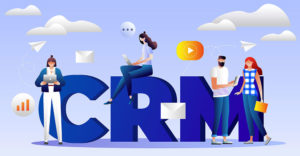Oracle on Thursday announced 50 new generative AI apps for its application suite that embed into existing business workflows across finance, supply chain, HR, sales, marketing, and service, as well as an expansion of the Oracle Guided Journeys’ extensibility. It seems like good stuff, but it also neatly demonstrates how you may need to take the good with the “what?” when looking at AI. I can explain.
First, the bad news — which extends well beyond Oracle to almost any vendor in the space working on AI.
Generative AI collects gobs of data from customers and vendors and synthesizes ideas that can help customers, often better than people. Like it or not, AI does things that humans do, and over time, the shift to tireless, precise, and more efficient machines is inevitable.
Knowing everything about the latest product or release is something AI just does, and it is something that people need to get up to speed on. This means that on day one, the machine likely has the advantage. But that’s just day one. Also, machines are not good at empathy.
AI and Human Synergy
The key to successfully automating jobs is first to find ways to be successful with people and automation working together, and so far, AI seems to be tuned in. AI is collating data and serving it up to users who can then add their own insights, and if that persists, we should be fine. Along the way, though, we will likely see new jobs open for people that we may not even be imagining right now. That would be a win for all sides.
This is not just me talking.
Back in 2011 a couple of MIT profs, Erik Brynjolfsson and Andrew McAfee, said much the same in their book, “Race Against the Machine.” Ironically, their jumping-off point was the American railroad folk hero, John Henry, who competed with a mechanical drill to bore holes in rock faces to set explosives. My point of interest is that the MIT professors went back nearly two centuries for their comparison, and now I’m doing the same with only about 14 years between forecast and reality.
AI’s Bright Side
Now, the good news.
Consider where there might be virgin territory, where a job is just too involved (so far) to be anything other than a human responsibility. I had not considered this until we began climbing out of Covid when supply chains were in a complete tangle, contributing significantly to inflation.
Americans suddenly shifted from buying services to buying products, resulting in too many products awaiting shipment in China and too many empty shipping containers piled up on the other side of the Pacific. Railroads and the trucking industry also had problems, and the only solution available was to work overtime and invest in having more people pull on the threads of various chains. There was a lot of paper involved.
I am not saying that AI would have been a panacea, but I also recall an article from McKinsey around that time that showed how most supply chain pros relied on spreadsheets to manage shipments. So, I can imagine things could have been at least a tiny bit better had supply chain AI been available.
That’s one example, but I think there are many more of how AI can make things better in all kinds of business activities, including, and maybe especially, in the front office. Where? Just ask yourself where you are currently using spreadsheets in places like sales, marketing, service, and supply chain right now and you’ll have a big clue.
Evolving Software Niches
In my early days as an analyst, I noticed that many new software niches would spring up around little functions that were dominated by spreadsheets, the most obvious being SFA. It was sound reasoning, too, but replacing spreadsheets is a big job, and we all got mired down in coding for many years.
Code generation and platforms changed the equation to the point that today, we can easily contemplate AI bolted onto traditional apps precisely because the actual bolting is dominated by the generators.
When we think about AI or any new technology automating some jobs away while automating others into existence, we’re also thinking about what Oracle calls its Oracle Guided Journeys’ framework. My thought is that the capabilities that Oracle is introducing, like predictive forecast explanations, supplier recommendations, or negotiation summaries, will form the nuclei of new processes and new jobs. As always, it will be the users who figure out the optimum utility for these things.























































